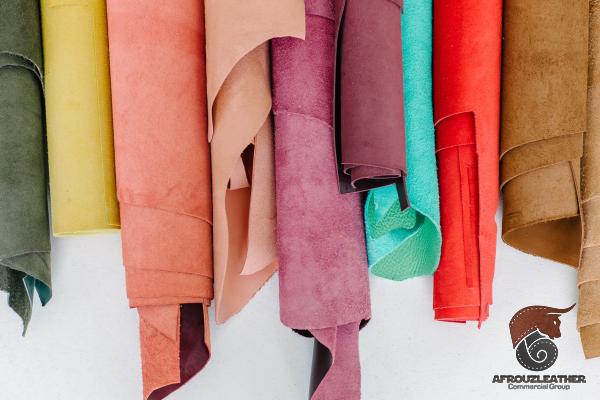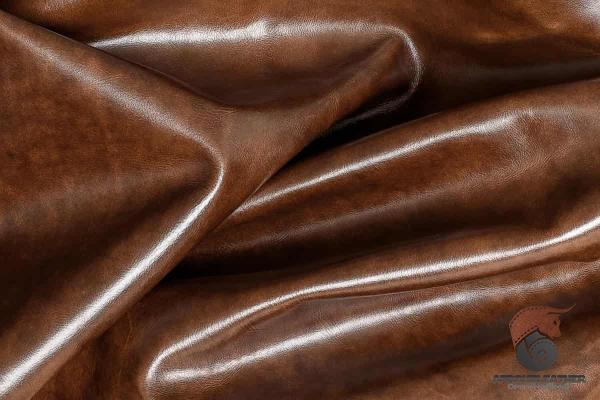Leather has been a prized material for centuries, known for its durability, comfort, and timeless appeal. In the realm of footwear, leather continues to be a popular choice due to its distinctive properties and the artisanal craftsmanship it demands. This article aims to provide a comprehensive summary of leather material for shoes, exploring its types, manufacturing processes, benefits, and sustainability considerations. Types of Leather: Leather for shoes can be broadly classified into various types, each with its unique characteristics and production methods: 1. Full-Grain Leather: Considered the highest quality, full-grain leather retains the entirety of the hide’s natural grain, making it durable and resistant to wear and tear. It has a natural patina that develops over time, enhancing its appeal. 2. Top-Grain Leather: Slightly lower in quality than full-grain, top-grain leather is created by separating the top layer from the hide. It is then sanded and treated, resulting in a more uniform appearance. While it may lack the natural patina of full-grain leather, it is still highly durable and relatively more affordable. 3. Corrected-Grain Leather: This type of leather is produced by treating the surface of the hide to remove any imperfections. A polyurethane coating is applied to lend a consistent texture and appearance to the leather. Corrected-grain leather is less breathable and tends to be less durable compared to full or top-grain options. 4. Split Leather: Split leather is derived from the fibrous middle layer of the hide. It is less expensive and less durable compared to full or top-grain leather.
leather
 Split leather can be further processed into suede, a napped finish that offers a softer texture but is more prone to staining and damage. Leather Manufacturing Processes: The production of leather for shoes involves several stages, including curing, tanning, and finishing. These processes transform raw animal hides into a finished material suitable for shoemaking. Some significant manufacturing techniques include: 1. Curing: Curing involves preserving the raw hides by removing moisture and preventing decay. Common methods include salting, drying, and controlled temperature storage. 2. Tanning: Tanning refers to the process of converting raw hides into stable, durable leather. Traditional tanning methods employ natural substances such as vegetable extracts, tree barks, and oils, while modern practices utilize synthetic chemicals. Tanning adds color, softness, and resiliency to the leather. 3. Finishing: Finishing processes enhance the aesthetic appeal and functionality of the leather. Techniques like buffing, sanding, and dyeing are employed to achieve desired textures, colors, and finishes. Additional treatments such as embossing, waxing, or adding a water-resistant coating can be applied to enhance the leather’s performance. Benefits of Leather for Shoes: Leather offers several advantages that make it an ideal material for shoe manufacturing. Some key benefits include: 1. Durability: Leather is known for its strength and ability to withstand daily wear and tear. Properly cared for, leather shoes can last for many years, providing excellent value for money.
Split leather can be further processed into suede, a napped finish that offers a softer texture but is more prone to staining and damage. Leather Manufacturing Processes: The production of leather for shoes involves several stages, including curing, tanning, and finishing. These processes transform raw animal hides into a finished material suitable for shoemaking. Some significant manufacturing techniques include: 1. Curing: Curing involves preserving the raw hides by removing moisture and preventing decay. Common methods include salting, drying, and controlled temperature storage. 2. Tanning: Tanning refers to the process of converting raw hides into stable, durable leather. Traditional tanning methods employ natural substances such as vegetable extracts, tree barks, and oils, while modern practices utilize synthetic chemicals. Tanning adds color, softness, and resiliency to the leather. 3. Finishing: Finishing processes enhance the aesthetic appeal and functionality of the leather. Techniques like buffing, sanding, and dyeing are employed to achieve desired textures, colors, and finishes. Additional treatments such as embossing, waxing, or adding a water-resistant coating can be applied to enhance the leather’s performance. Benefits of Leather for Shoes: Leather offers several advantages that make it an ideal material for shoe manufacturing. Some key benefits include: 1. Durability: Leather is known for its strength and ability to withstand daily wear and tear. Properly cared for, leather shoes can last for many years, providing excellent value for money.
Specifications of leather
 2. Breathability: Leather is a natural material that allows air to circulate, keeping feet comfortable and preventing odor. Its breathable properties make leather shoes a popular choice, especially in warmer climates. 3. Comfort: With time, leather molds to the shape of the foot, providing a personalized fit and exceptional comfort. Its soft and supple nature reduces discomfort caused by friction and pressure points. 4. Style and Timelessness: Leather exudes a classic, sophisticated appeal that transcends fashion trends. It adds elegance and a touch of luxury to any shoe design, making leather footwear versatile for both formal and casual occasions. Sustainability and Ethical Considerations: In recent years, the ethical sourcing and sustainable production of leather have become important considerations for consumers. Several measures have been taken to address these concerns and promote responsible practices in the leather industry: 1. Animal Welfare: Ensuring responsible sourcing and humane treatment of animals is essential.
2. Breathability: Leather is a natural material that allows air to circulate, keeping feet comfortable and preventing odor. Its breathable properties make leather shoes a popular choice, especially in warmer climates. 3. Comfort: With time, leather molds to the shape of the foot, providing a personalized fit and exceptional comfort. Its soft and supple nature reduces discomfort caused by friction and pressure points. 4. Style and Timelessness: Leather exudes a classic, sophisticated appeal that transcends fashion trends. It adds elegance and a touch of luxury to any shoe design, making leather footwear versatile for both formal and casual occasions. Sustainability and Ethical Considerations: In recent years, the ethical sourcing and sustainable production of leather have become important considerations for consumers. Several measures have been taken to address these concerns and promote responsible practices in the leather industry: 1. Animal Welfare: Ensuring responsible sourcing and humane treatment of animals is essential.
buy leather
 Organizations such as the Leather Working Group (LWG) have established standards to assess and promote animal welfare in the leather supply chain. 2. Traceability and Transparency: Brands are increasingly striving for transparency in their supply chains, ensuring the traceability of leather and demonstrating a commitment to responsible sourcing. 3. Environmental Impact: Tanneries are implementing more sustainable practices, including the reduction or elimination of harmful chemical usage, wastewater management, and energy-efficient processes. Additionally, chrome-free tanning methods are gaining popularity due to their reduced environmental impact. 4. Circular Economy: Embracing a circular economy approach involves extending the life of leather products through repair, refurbishment, and recycling. This helps minimize waste and reduce the environmental footprint of leather footwear. Conclusion: Leather material for shoes holds a prominent place in the fashion industry due to its durability, breathability, comfort, and timeless appeal. Understanding the various types of leather, manufacturing processes, and its associated benefits is crucial for both manufacturers and consumers. With increased focus on sustainability and ethical considerations, the leather industry continues to evolve to meet the demands of a conscious world. By ensuring responsible sourcing practices and promoting circular economy principles, leather can continue to be a sought-after material for shoes in the years to come.
Organizations such as the Leather Working Group (LWG) have established standards to assess and promote animal welfare in the leather supply chain. 2. Traceability and Transparency: Brands are increasingly striving for transparency in their supply chains, ensuring the traceability of leather and demonstrating a commitment to responsible sourcing. 3. Environmental Impact: Tanneries are implementing more sustainable practices, including the reduction or elimination of harmful chemical usage, wastewater management, and energy-efficient processes. Additionally, chrome-free tanning methods are gaining popularity due to their reduced environmental impact. 4. Circular Economy: Embracing a circular economy approach involves extending the life of leather products through repair, refurbishment, and recycling. This helps minimize waste and reduce the environmental footprint of leather footwear. Conclusion: Leather material for shoes holds a prominent place in the fashion industry due to its durability, breathability, comfort, and timeless appeal. Understanding the various types of leather, manufacturing processes, and its associated benefits is crucial for both manufacturers and consumers. With increased focus on sustainability and ethical considerations, the leather industry continues to evolve to meet the demands of a conscious world. By ensuring responsible sourcing practices and promoting circular economy principles, leather can continue to be a sought-after material for shoes in the years to come.

Your comment submitted.